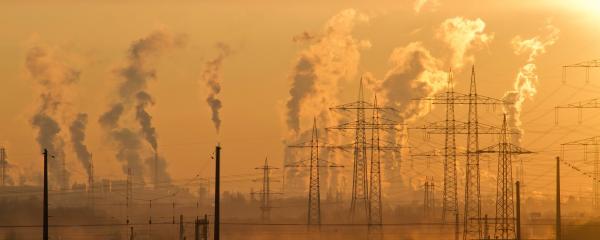Clean energy

Challenge
Sustainable Goal 7 seeks to ensure access to affordable, reliable, sustainable and modern energy for all.
Energy systems are the engine of economic and social development. Given that the energy sector contributes around three quarters of global greenhouse gas emissions, rapid decarbonization to achieve net zero by 2050 is vital.
We must break our addiction to polluting fossil fuels and embrace a cleaner, greener future.
The global total installed capacity of renewable power, and its share in the electricity grid, has increased over the past two decades. Today, some 30% of power generation globally is renewable. In 2023, the world added almost 510 gigawatts (GW) of renewable capacity, marking an increase of about 50% from the previous year. This growth rate was the fastest in the past two decades.
But we must move faster.
However, the efforts towards net zero emission will require huge water resources, which are increasingly under pressure.
The Intergovernmental Panel on Climate Change has identified freshwater requirements associated with most measures reducing emissions and sequestration. These requirements must be understood and managed in socially and politically acceptable ways to reduce the water intensity while increasing synergies with sustainable development.
Response
Energy generation and planning of operations are affected by hydrological and meteorological events. Energy systems are increasingly exposed to the fluctuations in weather and climate affecting both energy security and demand.
Policy makers, energy planners and grid operators therefore need comprehensive data and analysis to ensure the resilience of energy systems to climate related shocks and inform measures to increase energy efficiency. Climate services inform site selection, resource assessment and maintenance, and optimization of energy systems.
The WMO community is strengthening activities and partnerships to provide targeted services and information to support the transition to renewables. This takes into consideration the influence of weather and climate on the operational capacity and efficiency of wind, solar, and hydropower systems.
Case Studies
The WMO 2022 State of Climate Services for Energy report lays out a roadmap for achieving the targets. It also includes a number of successful case studies.
- France: Réseau de Transport d’Électricité (RTE), the electricity transmission system operator of France, uses climate information and energy conversion models to calculate electricity demand and how it will be met by different generation means, including renewables for its long-term prospective studies.
- China: An early warning system aims to address risks to human life, energy stability and company assets via an online platform which issues warnings and recommendations regarding weather events posing risks to offshore wind farm operations.
- Egypt: A solar atlas developed by the Government of Egypt, with support from the Group on Earth Observations, is being used by the government to plan future national investments and the efficient exploitation of solar energy.
- Ethiopia: The use of forecasts to manage hydropower operations produces cumulative decadal benefits ranging from US$ 1 to US$ 6.5 billion, compared to a climatological (no forecast) approach.
- Tajikistan: Hydrometeorological data analytics in Tajikistan support climate-resilient hydropower operations and reduce vulnerability to climate change.
- United States of America: The use of streamflow forecasts increases energy production from major Columbia River (United States) hydropower dams by 5.5 TWh/year, resulting in an average increase in annual revenue of approximately US$ 153 million per year.




